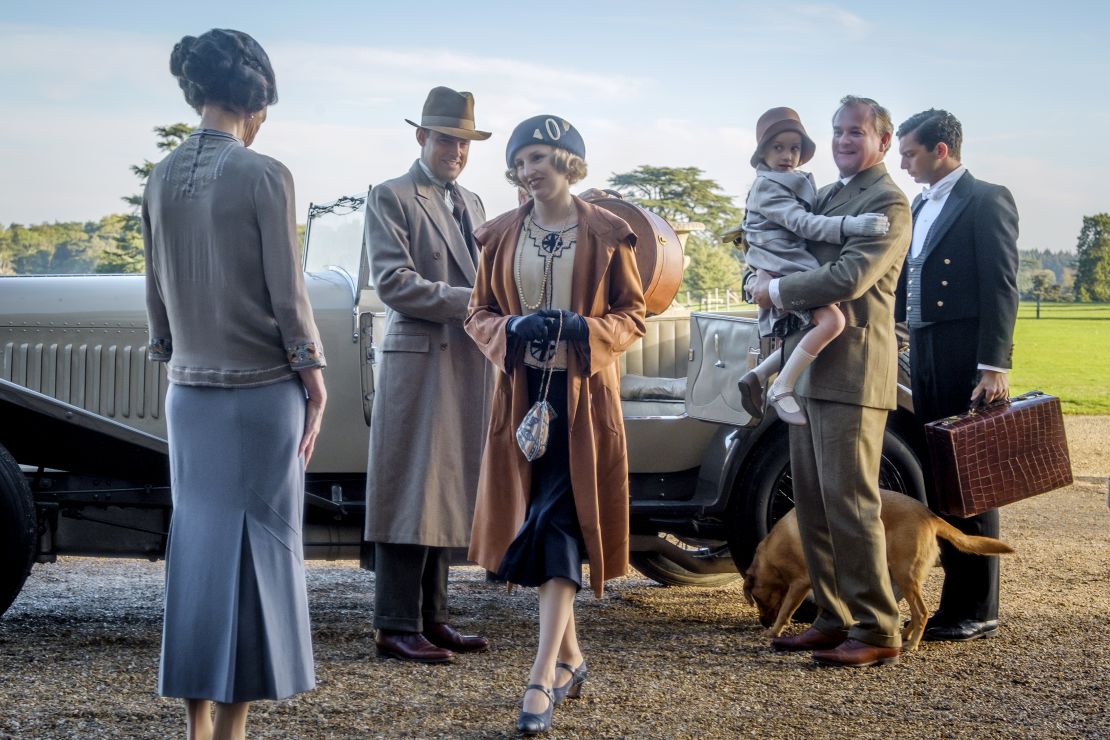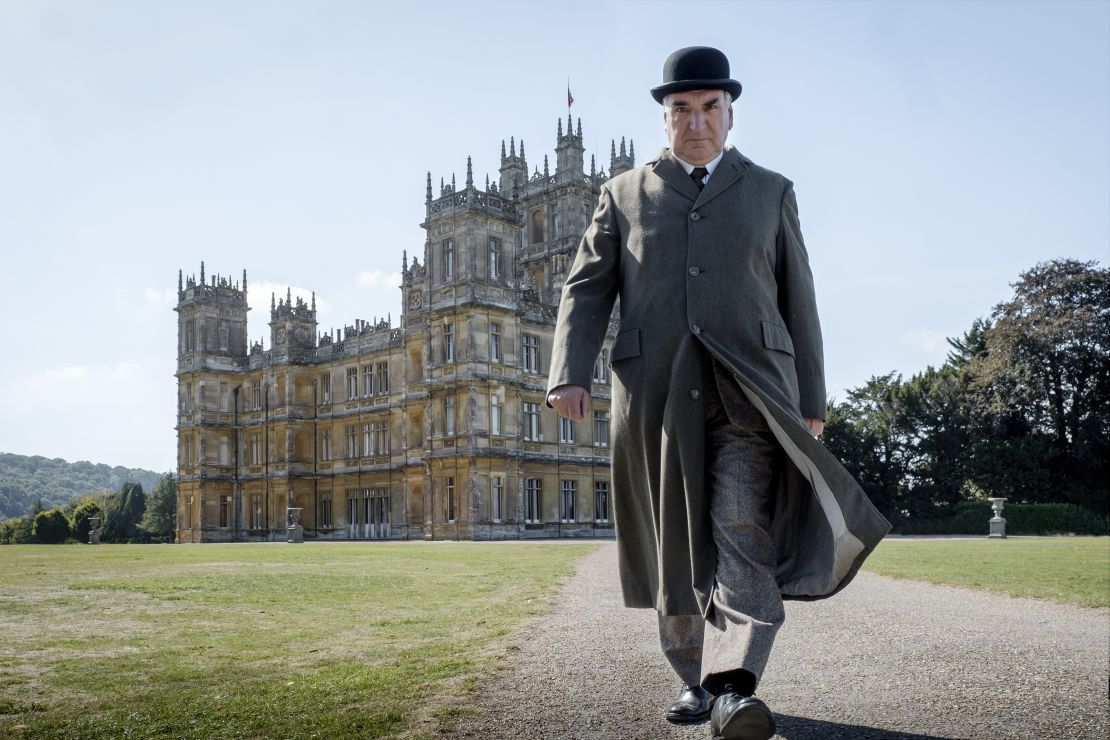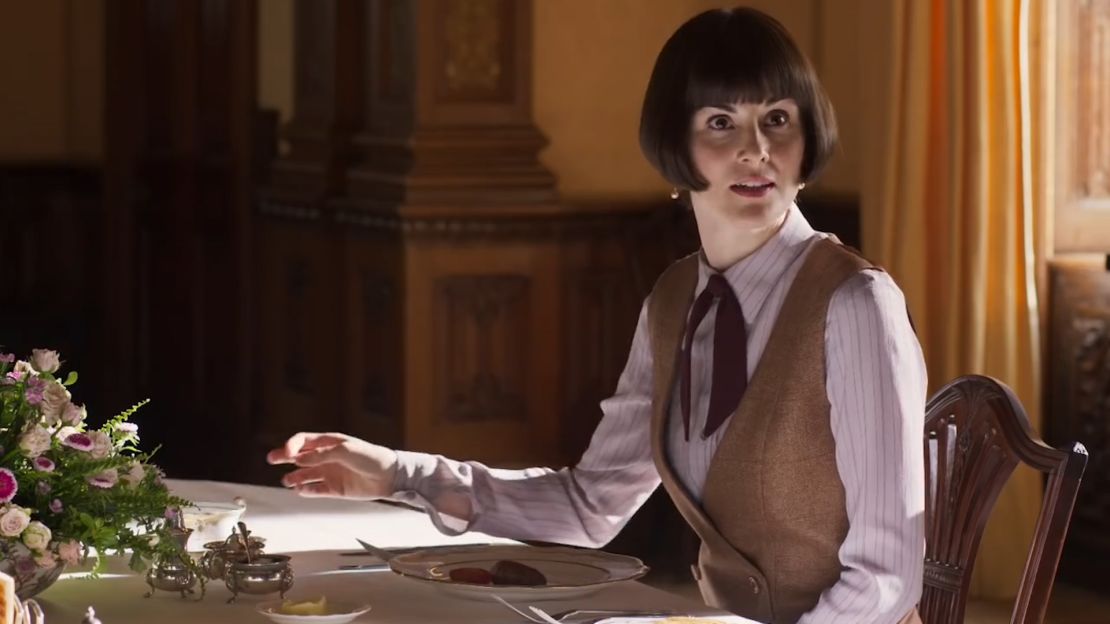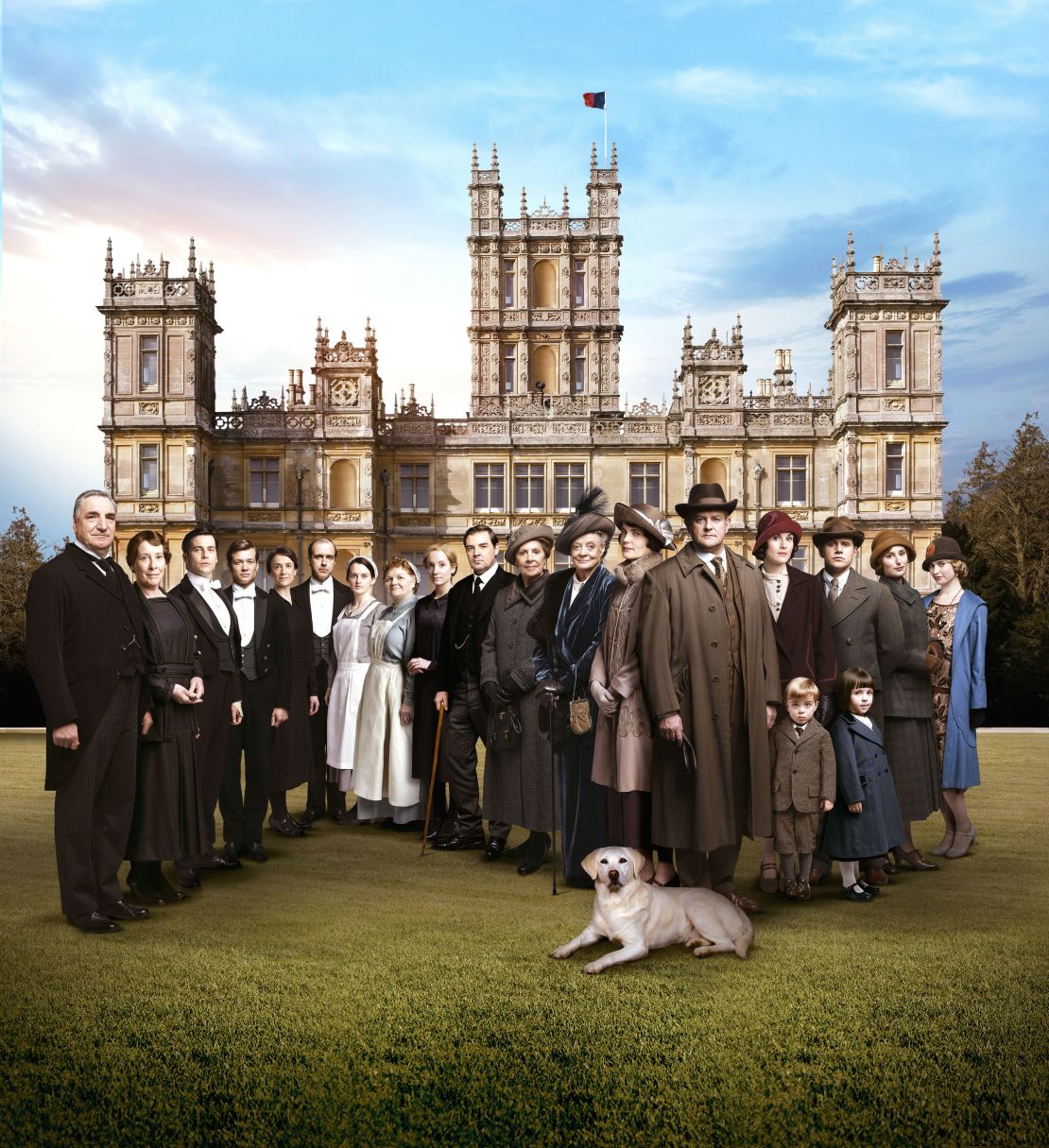Ask Julian Fellowes about the big-picture plans he had in mind for his creation “Downton Abbey” as he brought its television incarnation to a conclusion in 2015, and you get a frank answer.
“I didn’t think that there would be a film,” Fellowes tells CNN. “As far as I was concerned, the end of the series was the end of the show.”
But in an increasingly franchise-driven entertainment culture, where “Downton” was a rare original creation that sparked a global phenomenon and had viewers addicted to the unfolding fates of the aristocratic Crawley family and their devoted household staff that populated the British historical drama, the opportunity existed to extend the life of the concept beyond its six-season (or “series,” as they say in the United Kingdom where it was produced) television run.
“I knew other people wanted to try and make a film, but it seemed to me logistically too difficult, and I didn’t believe we’d make it happen,” Fellowes confesses. “So that gave me really about a year of thinking that there wouldn’t be a film.”
But producer Gareth Naeme – who originally contracted Fellowes to create the series on the strength of his screenplay for Robert Altman’s 2002 film “Gosford Park” and Fellowes’ 2004 novel Snobs – had envisioned a longer life since its fourth season.
“It was such a massive global hit in every territory and it was so recognized for its production values, I thought maybe we’d bring the TV series to an end, but this is big enough that it could go on in another form,” says Naeme. The moment the series finished editing its final episode, Naeme adds, he began developing a film follow-up.
“The rumblings continued, and I gradually came to terms with the fact that there was a desire for a film and there was a market for it out there, and that I’d better start thinking about what we would put into it,” says Fellows. Indeed, the audience’s appetite proved to be quite voracious: in its opening weekend, “Downtown Abbey” defied projections by besting both the Sylvester Stallone-led action sequel “Rambo: Last Blood” and Brad Pitt’s sci-fi opus “Ad Astra” with a surprise $31 million haul – three times its production budget.

But the road to the box office bonanza wasn’t cut and dried – Fellowes, Naeme and production team had to approach the project with the same painstaking care they’d lavished on the series.
After a review of the series, and the final episode in particular, to take stock of where things had gone and might yet go, “I was conscious of looking for an event that would affect everyone in the house, and not just the family or just the servants,” says Fellowes. “But at the same time I wanted it to be a positive effect – largely positive, anyway, I didn’t mind if some people were angry, as long as they have some kind of reaction.”
Inspiration for an all-encompassing story hook came when Fellowes read a book about a real-life tour of the Yorkshire countryside that England’s monarchs King George V and Queen Mary had made in 1912.
“As I read it, I thought, ‘Well, this is my idea!’” Fellowes reveals, transplanting the action to 1927. “They’ll come to Downton, and that will put everyone on their toes. Everyone will have to kind of take a line about the whole thing. And then I did a bit more research into royal visits and that’s how I came to it.”
Naeme instantly saw the cinematic potential of the concept.
“It was just true to our core values,” he says. “It felt like it was absolutely a story that could’ve been in the TV show, but it was of a much bigger scale…That was the biggest thing that we could do, and therefore it was a bigger story than those that we’d covered in the TV series.”
The story easily lent itself to subplots for all of the “Downtown” regulars, which led to a new challenge.
“How do we get 20 actors who now are world famous, have these careers that are taking them all over the place, all available at the same time? And that was very complicated,” admits Naeme.”There were times when I thought this won’t happen, but I was absolutely determined, because I felt it was a contract I had with the fans…And I would’ve felt that we let everyone down if we hadn’t pulled it off.”
During what Naeme called an “agonizing” year and a half of negotiations to get the cast in place, Fellowes toiled away on the script, knowing that he had a different task ahead of him than when writing the series.
“We wanted a combination of fans being welcomed back into a home which they had always enjoyed visiting and seeing people again whom they had always liked, and the kind of warmth associated with that,” he says. “But at the same time we wanted a convincing movie at the end of it.”

“We very determined from the beginning that the film would be viewable by people who had not watched the series and that there would be enough information within the film to tell all the stories, that they didn’t have to know anything from watching the show” Fellowes adds. “We stuck to that, and we’ve had several people say they enjoyed it even though they never watched the show at all, which is very much music to my ears.”
Fellowes reveals that he embraced the fact that he was pushing himself into fresh storytelling territory. “I rather enjoyed the change,” he says. “Writing a series is different from writing a film – that’s just a basic structural fact. In a series, not every character expects to get a proper plot every week…Whereas in a film, I felt that every character we used had to have a narrative reason for being there. And every story we told had to be resolved before we parted. So that in itself was a completely different discipline to the series.”
The film’s director Michael Engler, who helmed several episodes of the series, recalls that when cast and crew finally reconvened to begin shooting the film, returning to now-iconic Highclere Castle and other familiar locales, there was a brief, tentative moment as everyone wondered whether they remembered how to figuratively ride a bicycle again.
“It took a second, really – literally like a couple of minutes,” says Engler. “Everybody had gone on and done other things and been busy. Some people have seen each other, some people haven’t. What was surreal about it was it felt almost like Rip Van Winkle: you go to sleep, and three years later, you wake up and just pick up where you left off.”
When crafting the film’s visual language, Engler had the unenviable task of hewing closely to the established style of the series while simultaneously venturing into more cinematic territory.
“We didn’t want to change the fundamental DNA of it, but we wanted to grow it and to expand it,” he says. “Because we had more time, more money, more resources, we could give ourselves more extravagant opportunities, like helicopter shots and drone shooting….[We could] just allow ourselves to be a little less reserved, a little bolder in some ways…The goal was to make it feel like the same, but elevated and richer in the design.”

Along with the familiar “Downton” approach to lovingly chronicling the methodically, almost ritualistically performed chores throughout the estate, Engler was able to apply a similar but grander approach to the pomp and circumstance accompanying the royals and their entourage. “One of the things that I’ve always loved about ‘Downton’ was it takes that stuff very seriously,” says the filmmaker. “It doesn’t play fast and loose, and just say, ‘Oh, it doesn’t really matter where anybody stands, as long as it looks good.’ Everything is done exactly the way it would have been done.”
“Another fun thing about it is that when everybody’s behavior is expected to be at its most correct and proper,” Engler says. “Then the little variations that come out of just human nature – excitement, nervousness, pride, any number of things, then showing those little areas where it slightly shifts or goes off is kind of fun.”
Fellowes says watching those time-honored processes has a calming effect.
“There is something fascinating and emotionally pleasant about watching everything go into its correct place,” he offers, noting that it also steeps the Crawleys in tradition. “Every family has its own rituals of how they celebrate Christmas, and they don’t vary from year to year because their familiarity is part of the pleasure, and I think that that is part of the pleasure of ‘Downton,’ really.”
Ultimately, all the factors would successfully converge to make for a creatively – and eventually, commercially – successful transition to the big screen. “From the moment you see the first reveal of Downtown Abbey at the beginning of the movie, with John Lunn’s extraordinary beautiful music, you really know you’re back, bigger and better than ever before,” says Naeme.
Even before the box office numbers came in, Naeme was already envisioning an ongoing film franchise.
“I see absolutely no reason why we couldn’t return,” he says.

On the morning of the film’s US release, Fellowes was a bit more cautious about extending his magnum opus.
“I’ve given up saying never in my life because I knew as soon as I say it that I have to retract it,” he says. He’s in the midst of casting and finding locations for his next project, “The Gilded Age,” a series set in 1880s New York City for HBO, as well adapting his 2016 historical novel Belgravia into a six-part series for ITV and Epix (both projects are also produced by Naeme), so he already has a pretty full plate. “I can see a situation in which there might be another movie, but let’s have at least a few days to consider how well this one has been received.”
Nine years after the series debuted on the BBC, Fellowes contends that he’s not entirely sure why “Downton Abbey” continues to strike such a nerve among its faithful. “Lots of people have written lots of words about why, but then nobody seems really to fully to understand or explain it,” he says. “It’s been tremendous fun to be at the heart of it, to be at the center of it – you can be sure of that. But as to quite why it’s has been a worldwide phenomenon and the way it has…I really don’t understand it.”
“Obviously on some level or other we got the mix right, but quite why and what ingredients were so right, I couldn’t tell you,” Fellowes adds. “I think we have a wonderful cast, and there’s something in its combination of comfort and drama that seems to appeal, and humor that other shows that have had very similar recipes have not have done so well. I don’t know. I just thank God for it, really.”



